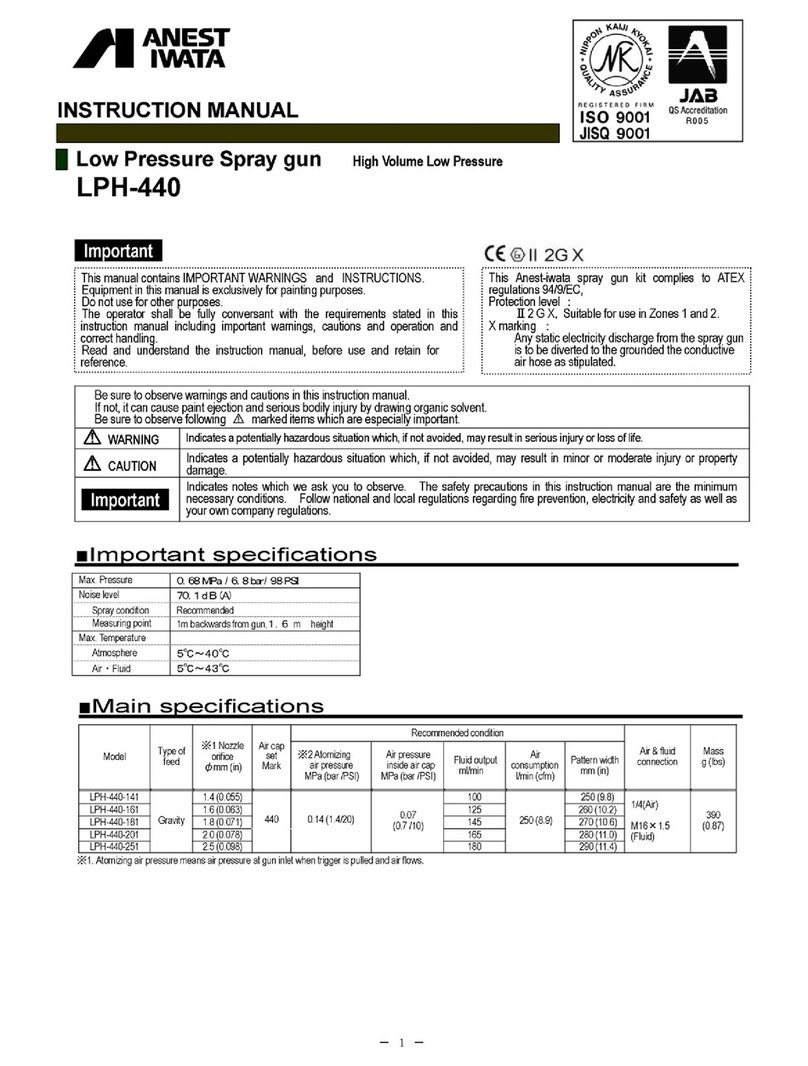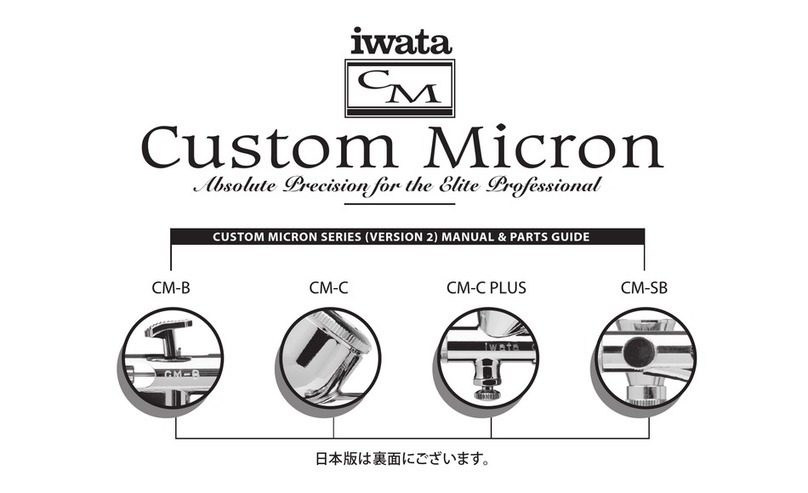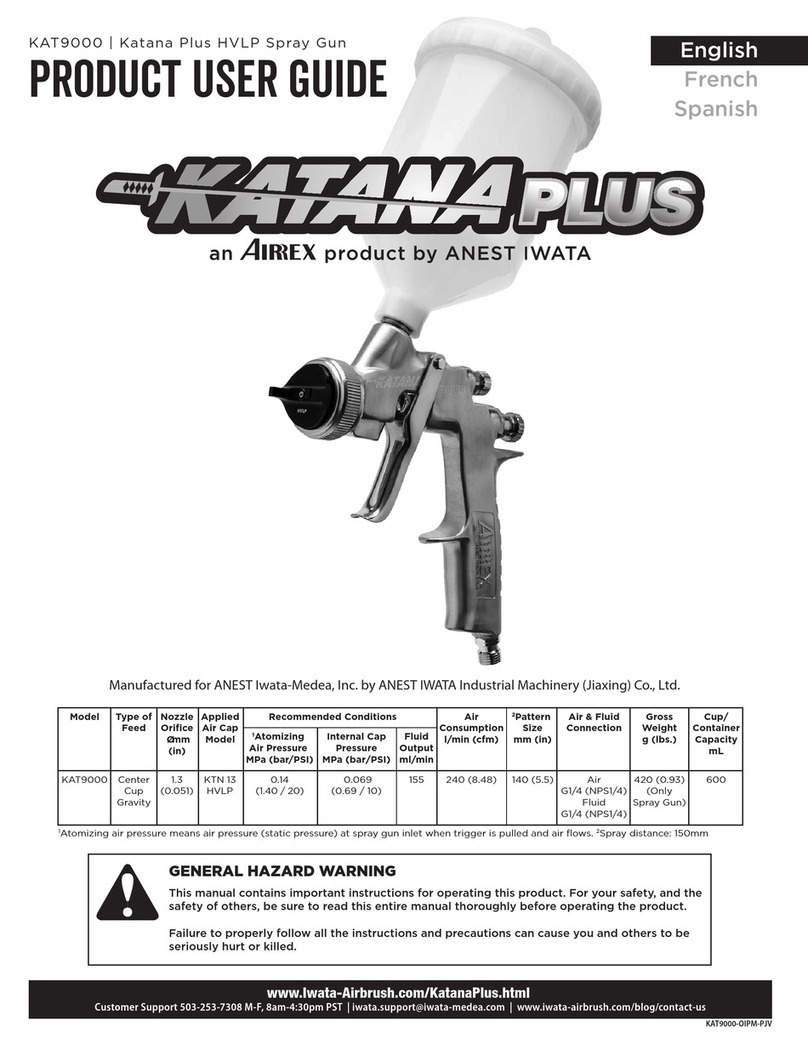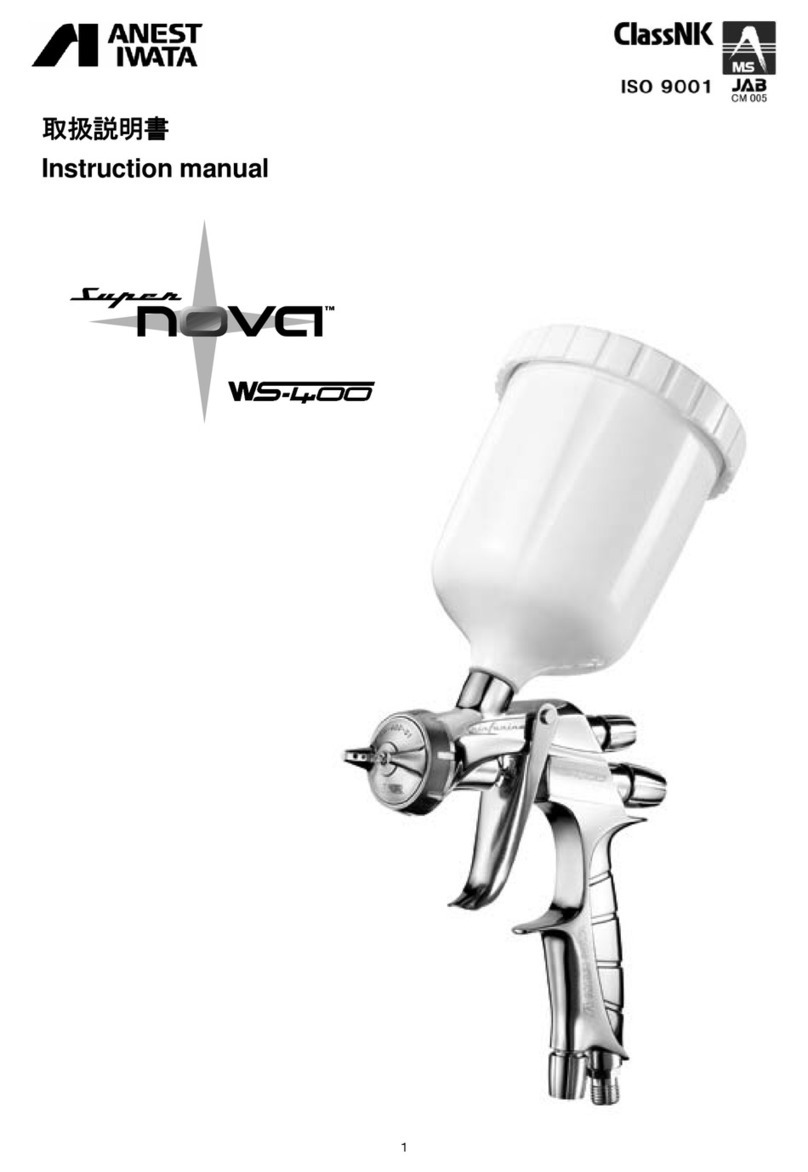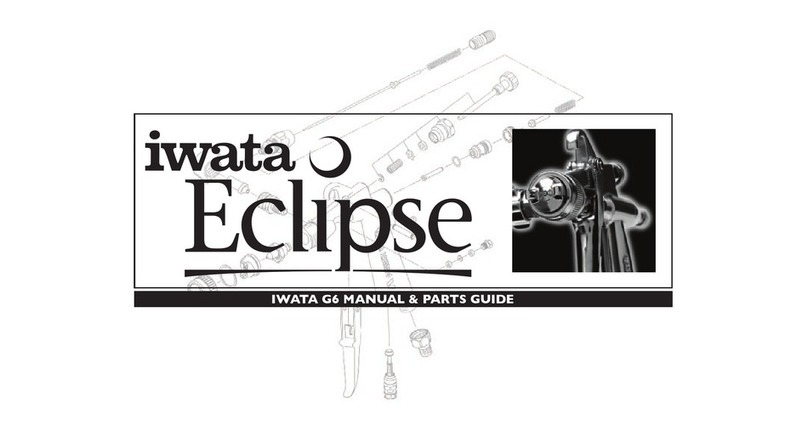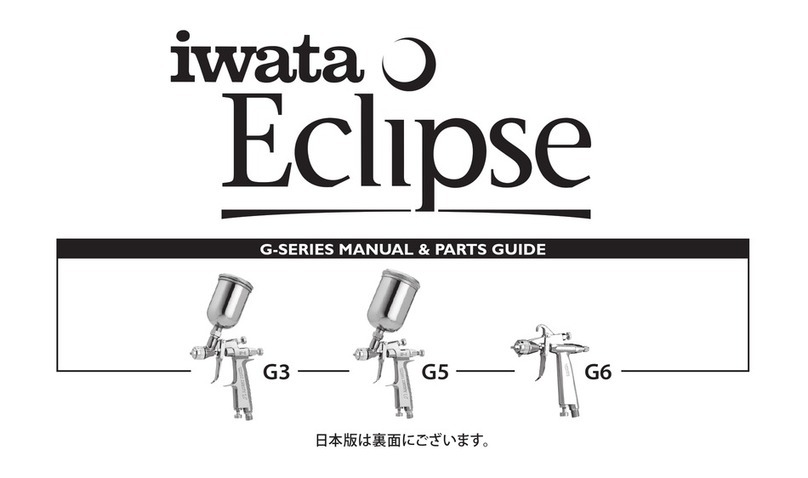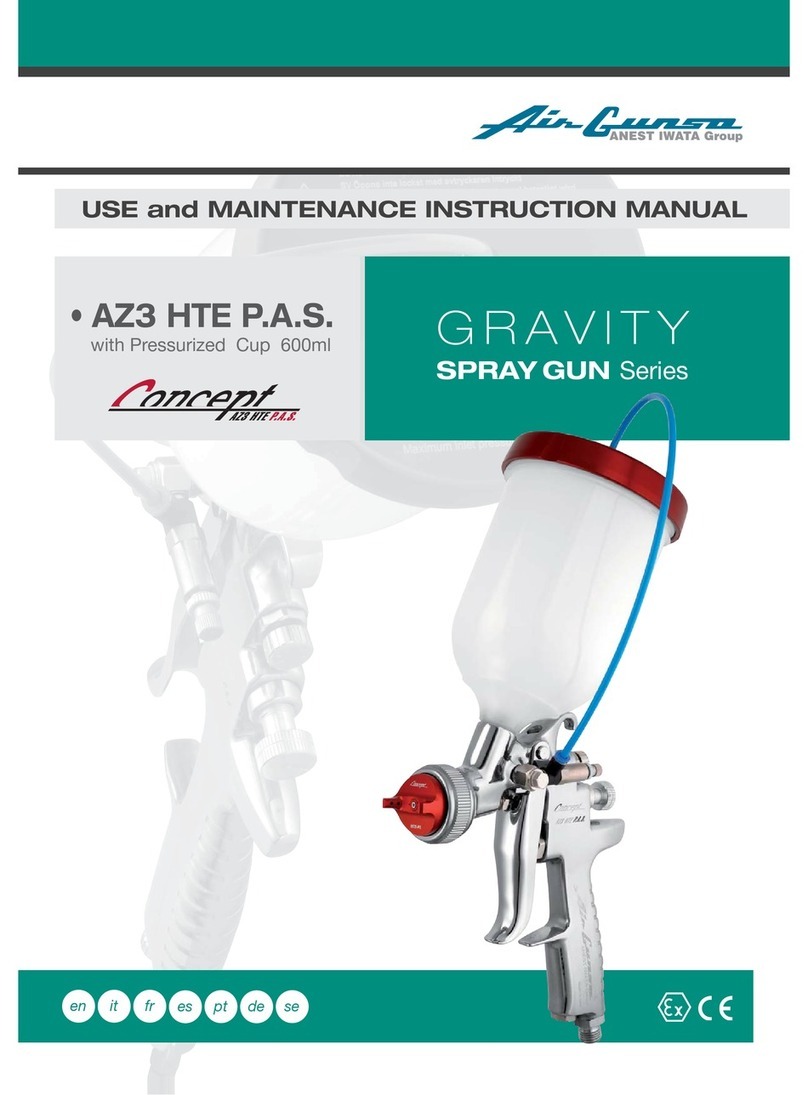Description
This 2 litre pressure pot provides material under pressure. This item is equipped with and air
regulator, pressure gauge, safety valve, air release valve and fluid outlet.
It can be used for the supply of materials other than paint.
It is not designed for use with highly abrasive, corrosive, toxic or rust inducing materials.
DO NOT USE with:
Any halogenated hydrocarbon solvents eg Methyl Chloride
Any flammable or toxic products eg petrol / kerosene
Any herbicides or pesticides
Ant radioactive fluid
Installation
Follow the manufacturers recommendations for the mixing preparation of the material.
Strain the material using a fine mesh screen in order to prevent the entry of foreign
matter and clogging of the material passageways.
1. Always relieve all air pressure in the tank by loosening the air release valve –Part 7 –
until no air pressure remains in the container –the air gauge will read ‘0’.
2. Unscrew the lid assembly and remove.
3. Pour strained material into the tank.
4. Replace lid assembly and tighten securely.
5. Ensure air supply is turned off and then connect air supply line to air inlet fitting on the
regulator. It is recommended that the air supply be passed through a filter regulator to
remove any dirt, water and oil residues.
6. Attach the air atomizing hose to the air outlet on the regulator. Connect the other end to
the spray gun.
7. Connect the material hose to the fluid outlet fitting on the tank. Connect the other end to
the spray gun.
Operation
1. Turn the air supply on and adjust supply pressure to approximately 40psi.
2. Turn the knob of the air regulator on the tank clockwise to increase pressure.
NOTE: IT IS RECOMENDED THAT THE MATERIAL PRESSURE BE KEPT AS LOW
AS POSSIBLE –
NORMAL OPERATING PRESSURE SHOULD NOT EXCEED 15PSI
WARNING: Air pressure loads higher than design loads, or alterations to the pressure
tank can result in tank rupture or explosion.
a. DO NOT make any changes to the pressure tank.
b. DO NOT drill, weld, or otherwise tamper with the pressure tank.
3. A safety valve protects the tank from over pressurization.
a. Prior to each use pull the ring on the safety valve to ensure it operates freely and
relieves air pressure. If it does not operate freely or relieve pressure it must be
replaced prior to the tank being used. Do not alter or discard this safety valve.
b. Ensure it is free from contamination by paint.
4. Atomisation for the spray gun should be adjusted with the use of an air regulator fitted to
the air inlet of the spray gun.
5. Operate the spray gun according to the manufacturer’s instructions.
